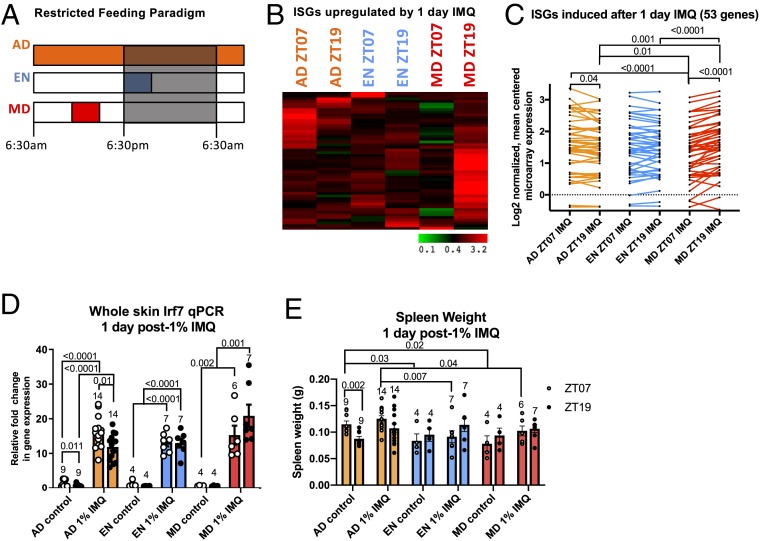Fig. 7.
Shifting the clock by daytime-restricted feeding (RF) alters the diurnal rhythm of IMQ-induced ISG expression. (A) Restricted feeding followed by IMQ treatment protocol. Mice were subjected to RF feeding schedules and then shaved and treated with 1% IMQ during the day (ZT07) or night (ZT19) for 1 d and then whole skin was collected for qPCR and pooled for microarray analysis (25). AD, ad libitum fed; EN, early night fed; MD, midday fed. (B) Heatmap of 202 ISGs (from MSigDB) from the samples collected in A. Green, lowly expressed genes; red, highly expressed genes. (C) Whole skin microarray expression of ISGs identified by MSig database (25), up-regulated by 1.2-fold or more after 1 d of treatment, is plotted. Data points indicate individual ISG expression values after IMQ, with average ISG expression per group indicated by colored lines (AD, orange; EN, blue; MD, red). Statistical significance was measured by one-way ANOVA and significant P values are shown. (D) Whole skin RNA samples from A were subject to qPCR for Irf7 (n = 5 to 14). Data are presented as mean ± SEM. (E) Spleen weights of mice 1 d post-1% IMQ treatment. (D and E) Data presented with points representing individual mice at ZT07 (white) and ZT19 (black), and colored bars representing the mean with error bars indicating ± SEM. Statistical significance was determined by Student’s paired t test, and significant P values are shown.

